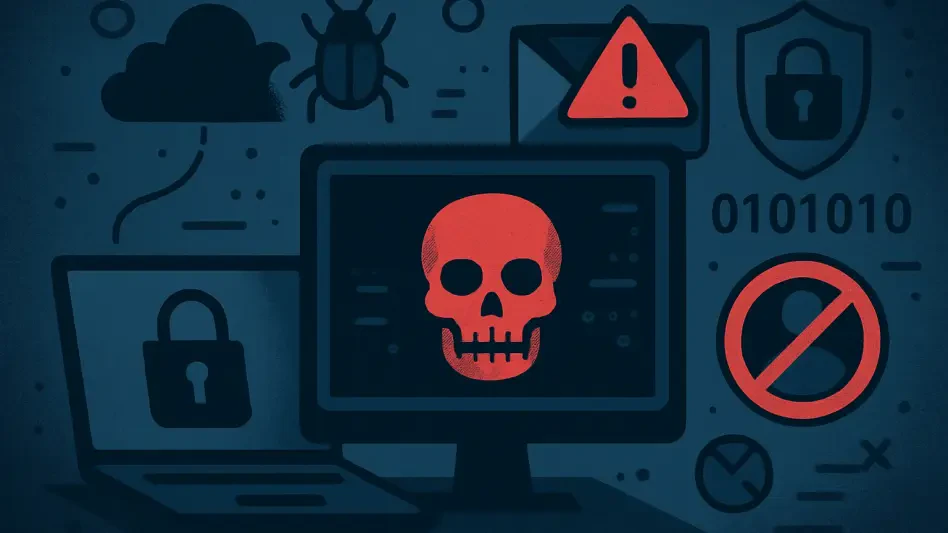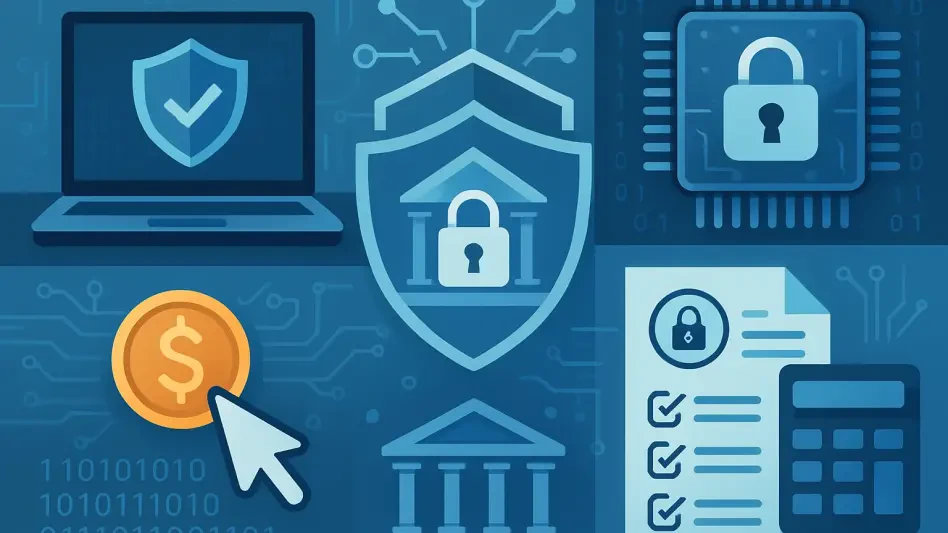As cybersecurity threats grow and regulations become increasingly complex, the IT channel emerges as a crucial ally for businesses striving to achieve compliance. Cybersecurity measures have become more critical as the frequency and sophistication of cyber attacks grow, necessitating the adoption of proactive strategies to safeguard continuity and the broader economy. This article delves into how the IT channel plays a vital role in helping organizations navigate and meet stringent cybersecurity requirements mandated by European directives such as NIS2, DORA, and CRA.
The Growing Importance of Cybersecurity Regulations
Escalating Cyber Threats
With the advancement of technology, cyber attacks have significantly increased in both frequency and sophistication. Businesses are now more vulnerable than ever, leading to potentially devastating consequences if proactive cybersecurity strategies are not employed. These attacks range from data breaches to complex operations aimed at dismantling critical infrastructure, making cybersecurity not just an IT concern but a business continuity necessity. The constant evolution of cyber threats has led to an urgent need for businesses to comprehensively overhaul their security measures, ensuring they are equipped to handle such risks effectively.
Moreover, the implications of insufficient cybersecurity extend beyond individual businesses to affect the broader economy. A single cyber attack on a crucial sector can create ripples that disrupt supply chains, affect financial markets, and erode consumer trust. Hence, implementing robust cybersecurity measures is imperative not only for protecting business interests but also for safeguarding the economy. Organizations must adopt a holistic approach that includes threat detection, prevention, and rapid response mechanisms. This shift towards advanced cybersecurity measures can ensure the sustained health of the business ecosystem, emphasizing the need for heightened security standards.
Regulatory Responses
In response to the increasing cyber threats, the European Union has introduced stringent regulations aimed at elevating cybersecurity standards across member states. These regulations are a direct response to the escalating risks that cyber attacks pose to various sectors, pushing businesses to adopt more rigorous security practices. Among the key regulations are the Network and Information Security 2 Directive (NIS2), the Digital Operational Resilience Act (DORA), and the Cyber Resilience Act (CRA). Each of these regulations plays a unique role in fortifying Europe’s cybersecurity landscape, providing comprehensive guidelines to mitigate risks effectively.
These new regulations encourage accountability, data protection, and operational resilience. NIS2 targets different sectors by implementing strict incident reporting and risk management. DORA focuses on financial institutions, ensuring they manage risks and remain resilient. CRA emphasizes secure-by-design principles and necessary updates for digital products. Together, these regulations set a baseline for cybersecurity practices, urging businesses to comply and upgrade their security measures. Businesses need to thoroughly understand these mandates, enabling informed decision-making.
Understanding the Major Cybersecurity Regulations
Network and Information Security 2 Directive (NIS2)
The NIS2 Directive aims to bolster cybersecurity across critical and important sectors within the EU by implementing stringent requirements for incident reporting and risk management. The Directive prioritizes the protection of essential sectors such as energy, transport, and healthcare, along with important sectors including manufacturing and postal services. Each sector is subject to rigorous rules designed to mitigate cyber threats, ensuring resilient operations even in the face of cyber incidents. The Directive mandates member states to develop tailored legislation based on these guidelines, with countries focusing on cybersecurity likely to implement even more stringent measures.
The NIS2 Directive represents a significant overhaul from its predecessor, emphasizing the importance of timely incident reporting and comprehensive risk management frameworks. Compliance requires businesses to identify critical assets, assess vulnerabilities, and establish incident response procedures. The Directive’s enforcement encourages entities to cultivate a culture of cybersecurity, where regular audits, training, and updates are necessary. By aligning with NIS2, businesses can safeguard their operations, protect sensitive data, and ensure a swift recovery from disruptions. As cyber threats evolve, NIS2 serves as a sturdy foundation for a resilient cybersecurity strategy.
Digital Operational Resilience Act (DORA)
Effective from January 2023 and reaching full implementation by January 2025, DORA focuses on financial institutions to ensure they can withstand and recover from digital disruptions such as cyber attacks. This legislation applies to entities including banks, insurance companies, and third-party tech providers, mandating comprehensive risk management protocols alongside incident reporting and regular system testing. The Act’s primary goal is to fortify financial entities against digital threats, ensuring their operational resilience amidst cyber adversities.
DORA mandates financial institutions to conduct regular assessments of their cybersecurity posture, identifying potential vulnerabilities and addressing them proactively. This includes the oversight of third-party services, recognizing the interdependent nature of the financial ecosystem. Institutions are required to document detailed risk management strategies, coupled with rigorous system testing to ensure preparedness against cyber attacks. The enforcement of DORA drives financial entities to adopt a proactive stance on cybersecurity, ultimately aiming to create a resilient financial sector that can navigate and recover swiftly from digital disruptions.
The Cyber Resilience Act (CRA)
Secure-by-Design Principles
The Cyber Resilience Act (CRA) introduces stringent cybersecurity requirements for hardware and software products with digital elements within the EU. Under these regulations, products must adopt ‘secure-by-design’ principles, emphasizing regular software updates and quick vulnerability fixes to enhance their security infrastructure. This Act addresses the need for robust product security to mitigate risks associated with digital products and services. By mandating these principles, CRA aims to build consumer trust, reduce cyber attack risks, and protect businesses from vulnerabilities.
Adhering to CRA involves incorporating advanced security features during the design phase, ensuring products are resilient against emerging cyber threats. Manufacturers must regularly patch vulnerabilities and provide necessary updates to maintain product integrity. Compliance with these principles drives a proactive security culture within the tech industry, underscoring the importance of developing inherently secure products. This approach not only enhances customer trust in digital solutions but also positions businesses favorably in a market increasingly concerned with cybersecurity standards, ultimately driving sustained growth and resilience.
Long-Term Benefits and Compliance
The long-term benefits of adhering to the CRA are multifaceted, promoting stronger cybersecurity practices and enhanced business resilience. Regulatory compliance helps organizations build a sturdy defense mechanism against cyber attacks, ensuring they can quickly respond to and recover from such incidents. By understanding their data assets, identifying associated risks, and documenting processes, businesses can adopt a structured approach toward compliance. This proactive stance provides a competitive edge, fostering consumer trust and safeguarding crucial business operations.
Additionally, compliance with CRA positions businesses advantageously in the digital marketplace, where security is a critical differentiator. Long-term adherence to these regulations encourages a robust cybersecurity framework, ensuring sustained operational resilience against evolving cyber threats. The Act’s emphasis on regular updates and vulnerability fixes ensures businesses’ digital assets remain secure, fostering growth and innovation in a secure environment. As cyber threats evolve, CRA’s structured guidelines provide a comprehensive approach to maintaining cybersecurity standards, ultimately leading to long-term business stability and profitability.
The Pivotal Role of the IT Channel
Advisory and Support Functions
The IT channel acts as an essential advisory body, guiding businesses through the complexities of legislative requirements. With an in-depth understanding of cybersecurity regulations, IT channel partners offer professional services, including risk assessments and the implementation of top-tier security technologies. These partners possess the expertise to demystify regulatory mandates, translating them into actionable steps for businesses. Their advisory functions ensure organizations can effectively navigate regulatory landscapes, cementing their compliance and bolstering their cybersecurity infrastructure.
Beyond guiding businesses through compliance, IT channel partners provide invaluable support in establishing robust security practices. They offer solutions tailored to each organization’s unique needs and vulnerabilities, ensuring comprehensive risk management. This includes deploying advanced technologies that safeguard critical assets and establishing procedures for incident reporting and response. By leveraging the expertise of IT channel partners, businesses can enhance their security posture, ensuring readiness against potential cyber threats and achieving sustained compliance with regulatory directives.
Ongoing Value-Added Services
The IT channel continues its essential role in supporting businesses as cybersecurity threats intensify and regulations grow increasingly complex. Given the rise in both frequency and sophistication of cyber attacks, implementing robust cybersecurity measures is crucial. Proactive strategies are needed to protect not only business continuity but also the broader economy. By exploring the pivotal role of the IT channel, it becomes evident how these partners help organizations adhere to strict cybersecurity requirements imposed by European directives such as NIS2, DORA, and CRA. These directives mandate stringent security measures and compliance standards, making it imperative for businesses to seek expert guidance and support. By leveraging the expertise of the IT channel, companies can navigate the complex landscape of cybersecurity regulations, ensuring they remain protected against evolving cyber threats while meeting legal obligations comprehensively.







